Many times during reading about Power Supplies, I came to this word and couldn't find it's meaning? What does generally burst mode mean? What is the advantage of a power supply if it has burst mode. To be more specific in Buck converter.
-
1I'll give you another search term which will help you "Pulse-skipping mode". Google them together. – Eugene Sh. Feb 07 '17 at 18:56
4 Answers
Normally with a buck regulator it continually switches a transistor on and off at a certain duty cycle to feed energy to the load. When the load draws high current the energy transferred is high and this results in a high duty cycle i.e. the transistor is on more than it is off.
When the load is very light and the input voltage is at the high end of its working range, you find that a very small duty cycle (less than 1%) is difficult to produce and so some regulators switch off the main process of continuous duty cycle and go "idle" for a while. During this period of idle, the output voltage drops to a certain point and this triggers to process to restart until the voltage reaches a higher level.
Then the regulator goes idle again for a while. This idle period is very much dependent on load current - if there is very little load current the idle period can be several milliseconds or more.
This is burst mode.
- 434,556
- 28
- 351
- 777
In Burst Mode operation, [buck converters deliver] single small pulses of current to the output capacitor followed by sleep periods where the output power is supplied by the output capacitor.
This reduces over all power consumption during light loads.
This may not be true for all Step-Down converters but it helped me.
The word meaning of "burst mode" is equal to the meaning of "pulse skipping mode". Typically, pulse is skipped from PWM control to maintain regulation at very light loads (i.e. 100uA ).
During the normal operation of DC-DC PWM, especially if you are in current mode control, you would use pulse skipping at a light load to improve the light load efficiency. At a light load, the conduction losses, switching losses, and Iq losses will become significant. Skipping pulses will therefor reduce switching losses.
In general, a DC-DC converter (buck or boost) will have two methods of operation: PWM or Pulse Skipping. To pick between the two different modes, I would look at the efficiency curve in the datasheet and the load that you have. Take a look at the graph below to get an idea of what you would need to look for.

- 1,401
- 1
- 11
- 22
-
-
1Not exactly. For example LTC (Now ADI) has DC-DC converters support both 'burst-mode' and 'pulse -skipping'. – diverger Nov 23 '19 at 02:19
Switchmode power supplies are generally efficient .Buck converters are generally more efficient than isolated types .These days the turn down ratio is often high .For example 12V in and 3V3 out .This means that at full load a linear reg would be very lossey .However at very light load the switchmode will draw more current than the linear reg .This is because the fixed frequency buck converter has some fixed losses that in % terms are low at full load but dominate at very light load .Burst mode is a term describing a scheme where the the converter is switched on and off during light load in order to reduce the standby power .There are other terms like "Green mode" or" Ball cock " .There are other ways of reducing standby power like frequency reduction and pulse skipping .
- 14,235
- 2
- 27
- 65